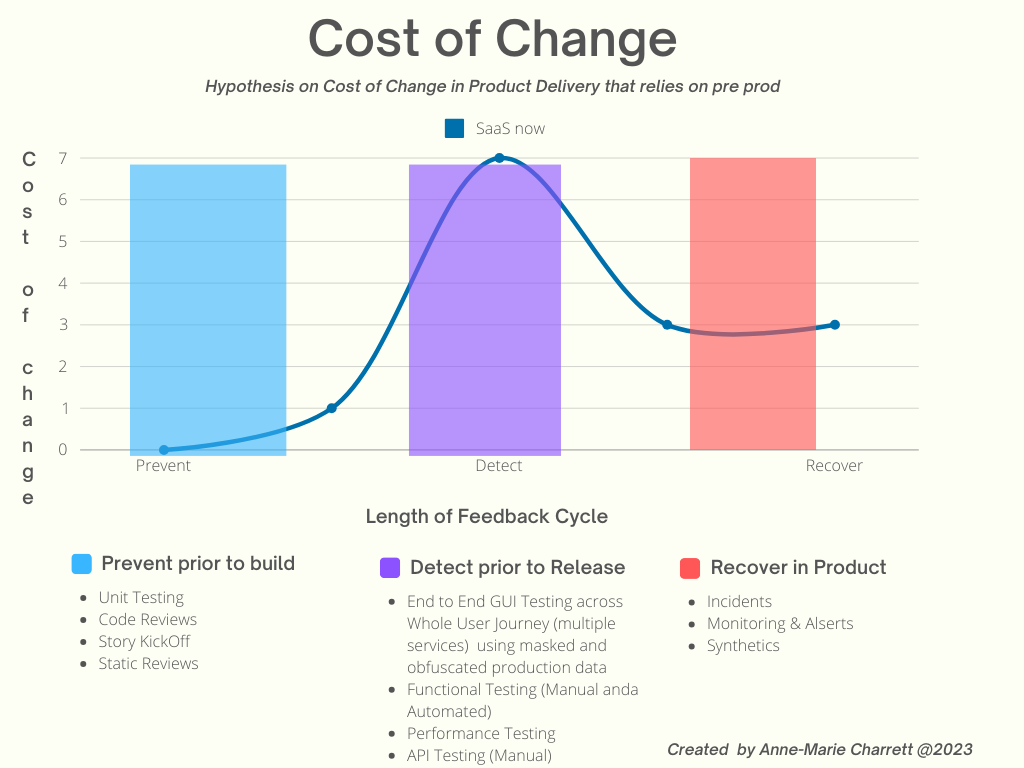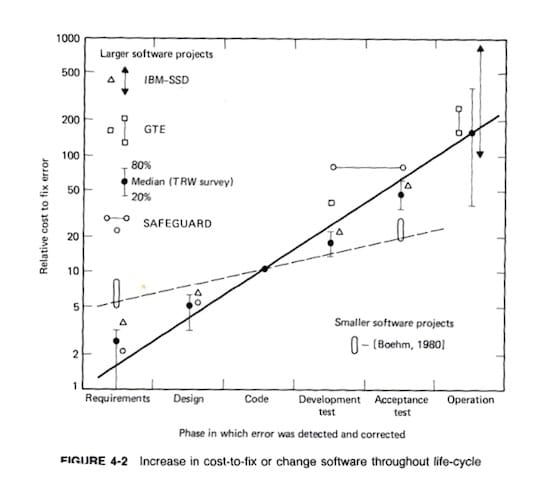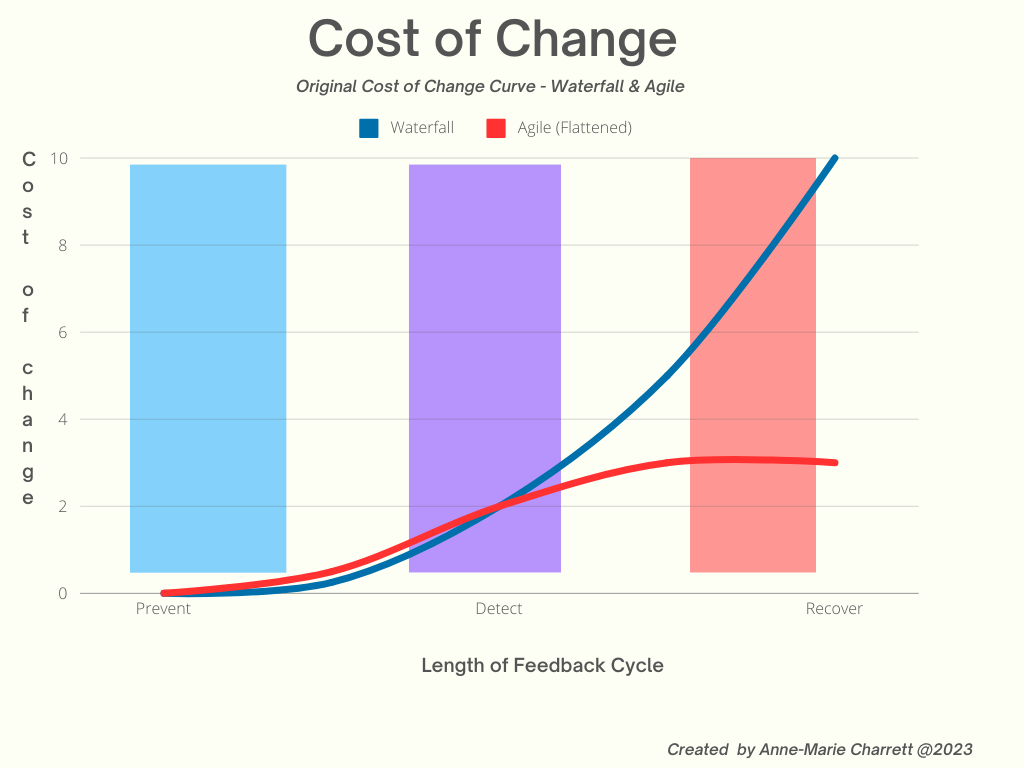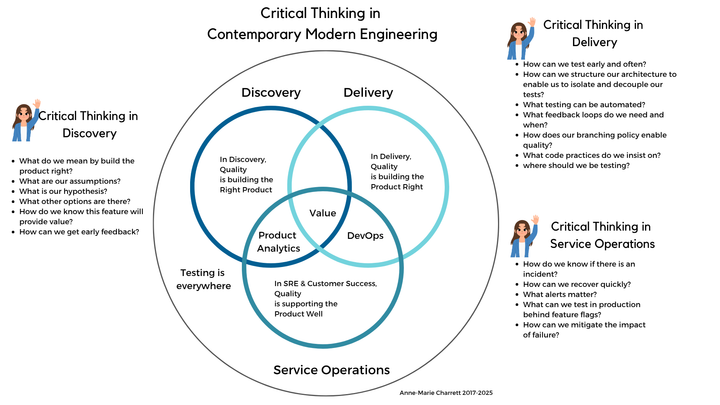Cost of Change in SaaS
Boehm's cost of change model has changed over the years. This article looks at the cost of change in SaaS and how it has changed the curve once again.

A history of the cost of change.
In the 1970s, Dr Barry Boehm hypothesised that the longer it takes to find a defect, the more expensive it is to fix it1.

Following on, the agile & XP community hypothesised that agile & XP practices would flatten this curve as smaller batch sizes and agile practices offered faster feedback loops.

There's been much debate about the accuracy and validity of the 'cost of change' model1. An interesting research paper on 171 software projects between 2006 and 2014 finds no credence to the hypothesis that finding defects early increases software engineering effort, suggesting that agile and new technologies have flattened the curve.
However, cost and effort are not always the same thing. Effort is only part of the picture. Other costs exist. For example, the test environments where defects are found also have a not-so-insignificant cost that we must also consider in the cost of change model.
Cost of Change in SaaS
In SaaS products, while delivering product quality is important, there's the knowledge and comfort that defects in production can be found and fixed far more rapidly than previously. With good monitoring and alerting, this additional safety net allows product discovery to continue innovating to determine customer value.
This impacts the cost of change model, as the cost of change in production is reduced.
The next sections explore the rise of recoverability, the impact of big data, and security threats on the cost of change models in SaaS products.



